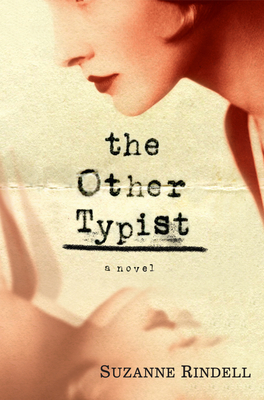Binding Community: North Branch Projects Turns Pizza Boxes into Books
Frustrated by the gulf between the contemporary art world and the people he cares for most, visual artist and bookbinder Regin Igloria founded North Branch Projects in the Chicago neighborhood where he grew up, Albany Park. In this small, independently run project space, Igloria offers hand bookbinding sessions free of charge six days a week, using inexpensive, often re-purposed materials. He calls these informal gatherings “community binding.”
A refreshing departure from the usual white cube gallery space, North Branch Projects exudes a sense of youthful energy and fun. Located in a bright, airy storefront on a residential street dotted with walk-in clinics, discount clothing stores, and jobber shops, its neon welcome signs invite curious passersby to slow down and take a closer look.
Once inside, the visitor is greeted by cheery yellow walls, a large worktable, and shelves and display cases plentifully stocked with bookbinding materials and tools, as well as an impressive array of finished books. To the back of the main workspace is a collection of handmade hula hoops and a ping pong table that has seen many heated tournaments. A mirrored disco ball hangs cheekily from the ceiling above.
We interviewed Igloria via email earlier this month to get his thoughts on this remarkable ongoing project.
PLOUGHSHARES: Why did you choose Albany Park as a location?
IGLORIA: I feel it’s the only place that says everything about who I am as a person. My parents chose to settle here from the Phillipines in 1977 and they still live in the two-flat building they purchased with my cousins back then. I’ve lived in other cities and occupied studios in other Chicago neighborhoods, but have never been able to truly call those places home. Albany Park has always brought in lots of people coming from different countries and struggling in just as many ways. I’m here because it keeps those ideas and feelings intact.
PLOUGHSHARES: North Branch’s objective is “community binding.” What has the response been from the community so far?
IGLORIA: The response has been very positive. I’m trying to stay conscientious about who the community is, though. It’s easy to move into an environment that isn’t populated by artists, or that’s seen as rather under-served, and then invite all the artist friends you know, but that doesn’t make much impact on the community I’m trying to reach. There are people like my parents, relatives, and many others I grew up with here who see the work we do as very far removed from anything they need in their lives. I want to create a crossover where they could be involved in some of those things–and vice versa.
PLOUGHSHARES: What kind of walk-in traffic do you get in a typical week?
IGLORIA: We get maybe one or two people who are completely new to bookbinding coming in per week, if we’re lucky. The ones who really get into it become studio assistants and continue to help out on a regular basis.
The interesting thing about calling yourself a community space, though, is that you really have to rely on the participation of others to keep going. There are many days when no one shows up for community binding and you start to wonder if you are talking about it enough, using social media the way you should be, reaching the right political players, etc. — but more often than not most of those ideas actually kill the community you once envisioned.
But really, “community binding” only takes one more person other than me sitting at the table stitching together books. There is something satisfying about making things with your hands and being in the company of others that is profoundly moving.
PLOUGHSHARES: Pizza boxes, rice bags with plastic handles, old album covers, you’ve put some pretty unusual “upcycled” materials to use in your bookbinding projects.
IGLORIA: At the bindery, we encourage the use of affordable materials that don’t require specialized knowledge or access to expensive art stores. The cost of traditional art supplies can turn people away, and seeing everyday items used in different ways helps expand the connection people have with objects. We like to tell people “if you can poke a hole through it, you can use it for parts of a book.”
PLOUGHSHARES: Tell us about your “make two, take one, leave one” policy.
IGLORIA: When people come into the studio, we have them make two books of the same style. They get to take one home with them to use as they wish. The other one will stay on the Neighborhood Archives to be eventually drawn or written into, or sold to help pay our bills. In this way, the people who participate in community binding become participants on many levels.
If you are willing to put time and effort into something, especially in a group effort, you will be contributing to something that transcends exchange. The books in the Neighborhood Archive collection are meant to represent that idea, and it really is the crux of our mission and the community binding sessions. I am a big advocate for the gift economy. When I tell people to leave one book behind, I’m also hoping they begin to understand the value of letting go.
PLOUGHSHARES: North Branch Projects is a mixed-use space: bindery, art gallery, and personal studio. How do these three components work together?
IGLORIA: The idea is fairly simple, and I think the key factor in all of it is its educational angle. I basically use things that are present in the space, such as the books that are sitting on the Neighborhood Archives shelf, or the work hanging in the gallery area, or even my own completed (or incomplete) works, as a teaching tool. It’s a show-and-tell concept that allows others to see the creative process in its many stages.
There is a very cyclical layout to the space: it starts with a setting seen by the outside world through the glass storefront, which draws people into the workspace. Once inside, they can participate physically and take part in the creation of the objects that are placed on display. That work is left to be shared with others who continue the cycle when they get excited about the work that others have left for them to see.
PLOUGHSHARES: Where do you see book arts going in the future?
IGLORIA: The only aspect of the future I’m thinking about is how we can further push a crossover between artists and non-artists. If there was a medium that could speak on so many levels to so many types of people, I think the book is the prime candidate. Its approachable size and the fact that the viewer can control when to turn pages makes such a difference in how one relates to it as artwork. It’s not so intimidating when you’re holding one in your own hands. I see the book as a medium to make change, and to bring people to better places and to a better understanding.


